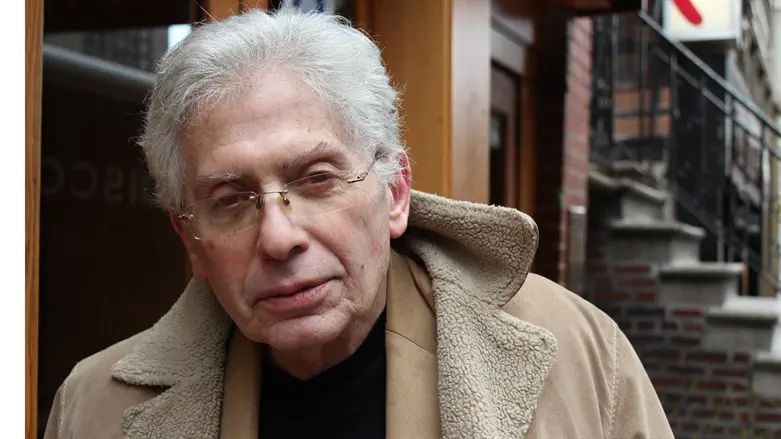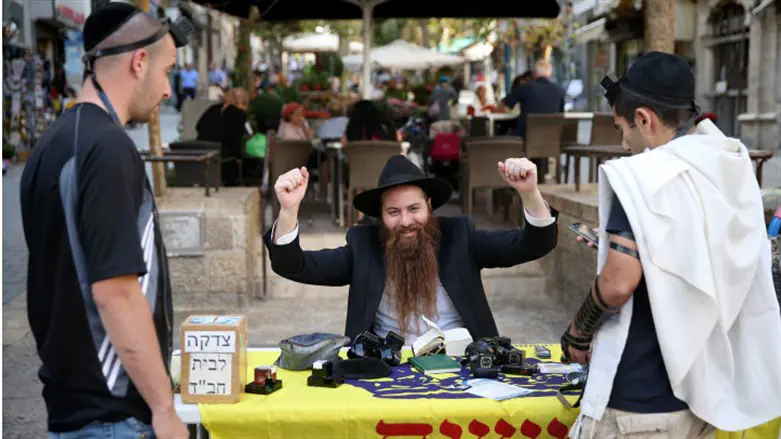13 Facts About Syrian Jews By Menachem Posner 1. Jews Have Lived There Since the Dawn of Our Nation Before G‑d called on him to travel west to the Holy Land, Abraham, the father of our nation, lived in what is now Syria.1 Years later, King David captured much of that territory,2 which attained a status of quasi-sanctity, not quite like the Land of Israel proper, but not like the Diaspora either.3 2. There Are Halabi and Shami Jews Ancient synagogue in Jobar, near the center of Damascus, named for Elijah the Prophet, and destroyed in the Syrian Civil War in 2014 (photo courtesy of Chrystie Sherman/Diarna.org). The two greatest centers of Jewish life were in Aleppo and Damascus. Aleppo is referred to in Hebrew as Aram Tzova (pronounced Aram Soba, by Syrian Jews). Its Arabic name is Halab (which was mangled into "Aleppo" in English), and its people are referred to as Halabi. Damascus is referred to among Syrians as Al-Sham, and the Jews of Damascus and their descendants are referred to as Shami. 3. There Were Many Notable Syrian Rabbis The classic collection Likdosim Asher Baaretz by Rabbi David Laniado lists hundreds of notable Syrian scholars, each of whom contributed to the advancement of Torah learning.4 Here is a sampling of some of the best-known scholars, some of whom called Syria home and some who just passed through: Rabbi Saadia Gaon (c. 882-942): Brilliant leader of the Babylonian Torah academy who rendered the entire Torah into flowing Arabic, and whose teachings and traditions remain central to Judaism today. While in Aleppo, he was instrumental in preventing the Jewish world from fragmenting into a situation that would have involved different places using different calendars. Rabbi Yosef Bar Yehuda (c. 1160–1226): A student of Maimonides, he was an outstanding scholar, physician, and philosopher in Aleppo, where he lived for many years. Maimonides wrote the Guide to the Perplexed to assist him in his efforts to reconcile his philosophical beliefs with belief in G‑d. The Dayan Family: As their name indicates (dayan is Hebrew for "judge"), successive members of the Dayan family, direct descendants of King David, served as rabbis in Aleppo for centuries. Rabbi Shemuel Laniado (--1605): Born in Aleppo to Sephardic parents, he studied under Rabbi Yosef Karo in Safed before returning to his hometown where he served as chief rabbi for four decades. He was known as the Baal Hakelim, because the titles of many of his published works began with the word keli. 4. Aleppo Had a Giant Synagogue Complex Postcard showing of the outdoor section of the Great Synagogue of Aleppo (scan courtesy of Diarna.org). The Great Aleppo Synagogue (known locally as al safra, "the yellow") was actually a complex with several synagogues, including an outdoor sanctuary that was used during the dry summer months. It had seven holy arks on the southern wall, consistent with the tradition that synagogues face toward Jerusalem (Aleppo is north of Jerusalem). The synagogue was destroyed during the 1947 violence that broke out after the UN's declaration of the partition of Palestine. It has since been partially restored but is rarely, if ever, used. 5. The Aleppo Codex Was Their "Crown" A page from the Aleppo Codex (photograph by Ardon Bar Hama, © 2007 The Yad Yitzhak Ben Zvi Institute). For more than five centuries, the Jews of Aleppo were stewards of a priceless annotated text of the entire Tanach, known as Keter Aram Tzova ("The Crown of Aleppo") or the Aleppo Codex, thus named because it was bound as a book ("codex") as opposed to the traditional scroll format. The book—which was produced by the famous Ben Asher family of Tiberia—came to Damascus along with a descendant of Maimonides, who treasured the Keter and consulted it in his own quest to identify the most proper and accurate Torah text. Unfortunately, a portion of the Codex went missing when the Great Aleppo Synagogue was destroyed in 1947. The remainder is now housed in the Shrine of the Book in Jerusalem. 6. They Were Joined (and Dominated) by Sepharad In the wake of the Catholic persecution of Jews in the Iberian Peninsula, which culminated with the Spanish expulsion of 1492 and the Portuguese expulsion of 1496, Spanish Jews (Sephardim) streamed into the relative tolerance of Muslim Arabia, including Syria. The Sephardim were originally separate from the native Jews (Musta'arabim), forming their own communal infrastructure and maintaining their own traditions. In time, Sephardic customs and traditions dominated, and all Jews of Syria identified as Sephardic. 7. Their Language Was Arabic Historically, the Jews in Syria spoke Arabic, similar to their non-Jewish neighbors. When Sephardim originally converged on Syria, they brought along their language, Ladino, or Judeo-Spanish. However, after hundreds of years of becoming one with the existing Arabic-speaking locals, Ladino was largely forgotten among the descendants of the Spanish exiles. 8. Some Light an Extra Chanukah Candle On Chanukah, some Syrian descendants of the Spanish exiles light a second shammash candle on the menorah, celebrating their ancestors' safe flight from the Spanish Expulsion. Read: 16 Menorah Facts 9. They Have a Rich and Unique Canon of Synagogue Music Detail from the cover of a holiday prayer book following the rite of the Jews of Aleppo, published in venice in 1527 (scan courtesy of Hebrewbooks.org) For hundreds of years, Syrian Jews have woken early on winter Shabbat mornings to sing bakkashot (prayer hymns). Some of them were composed by the great Sephardic Kabbalists and are known across the Jewish community, but others were composed and are sung only in the Syrian community. 10. Syrian Jews Live All Over In Holon, Israel, the Magen David Synagogue serves Jews from Syria and their descendants (photo: Roman Yanushevsky). The fabric of the Syrian economy began to unravel in the mid 19th century, when the industrial revolution and the opening of the Suez canal meant that there was much less East-West trade passing through Syria. As Jews emigrated elsewhere, a Syrian diaspora sprung up in Israel, the United States, Argentina, Mexico, Brazil, Panama and elsewhere. 11. There Are Large Communities in Brooklyn and Deal The Shaare Zion Synagogue as it appeared in 1964, during the decades-long tenure of Rabbi Abraham D. Hecht (photo: Library of Congress). Since the early 20th century, Brooklyn, N.Y., has been home to a large and prosperous Syrian Jewish community, whose grand synagogue, Shaare Zion, was among the largest Orthodox congregations in North America. There is also a Syrian-Jewish population in Deal, a small town in Central New Jersey, where the overwhelming majority of the residents are Syrian Jews, served by a growing bevy of synagogues, yeshivot, and communal organizations. 12. They Famously Banned Conversion Fearing that their rapidly assimilating community members would arrange perfunctory "conversions" for non-Jewish lovers, Syrian rabbis in Argentina—and later on in the US—decreed that no conversions would be performed and that no Syrian Jews could marry converts. 13. Jews Were Persecuted Out of Existence in Syria The 55,000 Jews in Syria after the establishment of Israel were severely restricted, and by 1964, there were barely 5,000 left. They were even more harshly persecuted, and they were not even allowed to travel from city to city. Their every move was watched by the Mukhabarat (secret police). The more they were tortured and confined, the more determined people were to leave Syria. The former Jewish quarter in Qamishli, near Turkey, which lost its once-significant Jewish population (photo courtesy of Joseph Samuels/Diarna.org). Except for 20 or 30 souls, all remaining Jews left Syria when Hafez al-Assad opened the doors in the early '90s, and today there are no more than perhaps a dozen Jews left in Syria, mainly in Damascus.5 | 






No comments:
Post a Comment